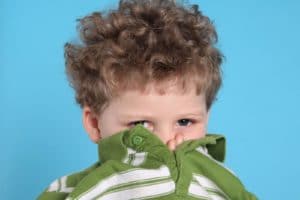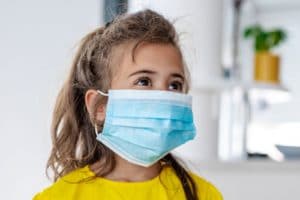Self-harm is a growing problem for adolescents and young adults. According to Mental Health America, 15% of teens reported some form of self-injury, with an even greater incidence (17-35%) among college students. As such, it’s very likely that you’ll be working with young people who are engaged in self-harm at some point in your career.
Would you know what to do in this situation? To help us understand why so many adolescents are intentionally harming themselves, we interviewed Beth Confer, MA, LPC, with Clarity Child Guidance Center.
In the conversation, Ms. Confer addresses the following questions:
- What are self-harming behaviors?
- Why do people hurt themselves?
- How common is self-harming?
- What can we do to help?
For more information, this video* offers an excellent overview of self-harm, and is a valuable resource for anyone who works with or volunteers with adolescents and college-age young adults.
What are self-harming behaviors?
“Non-suicidal self-injury, which is another name for self-harm, is a matter of some debate,” Ms. Confer explains, “but its growing presence in mainstream and popular media as well as the growing number of anecdotal reports by physicians, therapists and junior and senior high school counselors suggest that it may be as some have called it the ‘next teen disorder.’”
While self-harm is not a new phenomenon; Ms. Confer notes that the practice has been around since kids have been trying to grow into adults and cope with the stress that this growth often brings.
The most common forms of self-harm include:
- Skin cutting
- Head banging or hitting
- Burning
- Picking at or interfering with wound healing
- Pulling out hair
Other less common forms of self-injury include excessive scratching (enough to draw blood), intentional poisoning, punching oneself, inserting objects into body openings with the intent to harm, and intentionally breaking bones.
Why do people hurt themselves?
Self-harming usually begins as a way for kids to cope, Ms. Confer explains.
“What’s they’re trying to cope with is a myriad of things. Mostly it has to do with feelings, and the inability to feel them, experience them, and know that you’re not going to die because [the feelings] are so overwhelming.”.
The act of self-harm — for example, making a single cut in the skin — can help relieve a child’s stress, or bring them back to the present moment when they are consumed with worry or anxiety. In this way, it serves as a temporary relief from the harder emotional challenges they are dealing with.
Because the child uses self-harm as a way to help them relieve their stress – and it works very well to do that – they don’t often ask for helping in stopping.
“It’s very, very difficult to ask for help with this,” Ms. Confer points out. “What if the thing that you’ve been relying upon all your life, somebody’s going to take that away from you and tell you that you can’t use that anymore?”
Ms. Confer stresses that this is not suicidal behavior. New research is pointing to the role that endorphins adrenaline play in self-harm, and how the child actually feels “better” from harming themselves.
“I can’t stress that enough. This is not suicide. This is a way not to become suicidal, a way to survive and cope and get through the next day.”
How common is self-harming?
As the stats above show, self-harm is a common problem in this age group, although the severity and frequency of the self-harm varies widely. Other studies suggest that the numbers are much higher, with as many as 46% of teens in one study reporting injuring themselves on at least one occasion, with 60% of those endorsing moderate to several forms of self-harm – including deep cutting, burning, tattooing, and scraping skin.
Ms. Confer believes that children are growing up much faster in this generation, both physically and socially, and that could explain why we are seeing more self-harm at the onset of adolescence.
“Many girls have their first periods when in 4th grade now,” she says, “and in terms of cognitive development they may look like an adult but their brain is still that of a little kid.”
Once thought to be only exhibited by teens with mental health issues, self-harm is now recognized to be used by teens as a way to cope with emotional distress, as opposed to being a symptom of mental illness.
Know the warning signs of self-harm
It’s not easy to tell if someone has been harming themselves; they often hide the evidence well. But the Mayo Clinic offers a list of things to look for include:
- Scars
- Fresh cuts, scratches, bruises or other wounds
- Excessive rubbing of an area to create a burn
- Keeping sharp objects on hand
- Wearing long sleeves or long pants, even in hot weather
- Difficulties in interpersonal relationships
- Persistent questions about personal identity, such as “who am I” and “what am I doing here?”
- Behavioral and emotional instability, impulsivity and unpredictability
- Statements of helplessness, hopelessness or worthlessness
How you can help
When you suspect someone may be self-harming, it’s important to keep in mind that this child is doing the best they can with what they know works.
“It really doesn’t matter why they started in the first place” she says. “They’ll tell us, eventually, what’s going on. The important thing is to get them hooked up with somebody that’s going to help, support them, and help them learn another way to do this.”
Good results can often be found with cognitive behavioral therapy (CBT), creative therapy and other forms of professional intervention. If you suspect a child under your care is engaging in self-harm, follow the existing school protocol to connect them with the right resources. And share this information with other youth workers, to help spread awareness of the facts and reasons behind the growing problem of self-harm.
*Note: You must be able to access YouTube to view these videos. Some organizations limit access to this video-sharing website.










